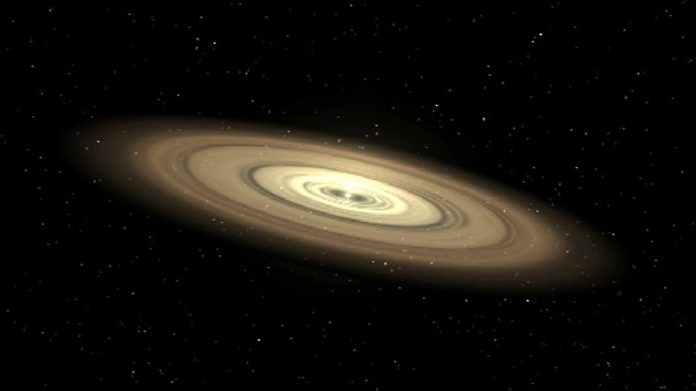
A recent study by an international team of 45 researchers has uncovered new insights into the formation of comets in the early solar system by analyzing meteor showers.
These findings, published in the journal Icarus, suggest that the differences in how comets break apart as they approach the sun are linked to the conditions in the protoplanetary disk where they formed 4.5 billion years ago.
Meteor showers occur when small pieces of comets, called meteoroids, enter Earth’s atmosphere and burn up, creating bright streaks of light.
According to Peter Jenniskens, a meteor astronomer at the SETI Institute and NASA Ames, the meteoroids we see as meteors are about the size of small pebbles.
These pebbles are similar in size to the ones that combined to form comets during the early stages of our solar system’s development.
In the early solar system, tiny particles in the disk surrounding the young sun gradually grew larger, eventually becoming small pebbles.
However, once these pebbles reached a certain size, they could no longer move along with the gas in the disk and were prone to breaking apart in collisions.
Comets and primitive asteroids formed when clouds of these pebbles collapsed into larger bodies, typically kilometers in size.
Fast forward to today, when comets approach the sun, they begin to crumble into meteoroids. These meteoroids continue to travel with the comet for a while, and when they eventually enter Earth’s atmosphere, they create meteor showers.
The researchers hypothesized that comets break apart into pieces the size of the pebbles they were originally made of. Jenniskens and his team, including both professional and amateur astronomers, used specialized low-light video cameras in a NASA-sponsored project called CAMS (Cameras for Allsky Meteor Surveillance) to track meteor showers around the world. These cameras measure the meteoroids’ paths and how they interact with Earth’s atmosphere.
The study focused on 47 young meteor showers, mostly originating from two types of comets: Jupiter-family comets from the Scattered Disk of the Kuiper Belt beyond Neptune and long-period comets from the Oort Cloud, which surrounds our solar system. Long-period comets, which have wider orbits, tend to crumble into larger, less dense meteoroids. These meteoroids often contain a small percentage of solid materials that were heated in the past, and they tend to burn up deeper in Earth’s atmosphere.
In contrast, Jupiter-family comets usually break apart into smaller, denser meteoroids with a higher percentage of solid materials. This difference suggests that Jupiter-family comets formed closer to the sun, where pebbles underwent more fragmentation during their formation.
The study also revealed that primitive asteroids, which formed even closer to the sun, produce meteor showers with even smaller particles. This indicates that these asteroids experienced even more aggressive fragmentation during their formation.
The researchers propose that the differences between long-period and Jupiter-family comets could be due to the movement of Neptune and other giant planets during the solar system’s early days. As Neptune moved outward, it scattered comets and asteroids, creating both the Scattered Disk and the Oort Cloud.
However, the properties of these comets suggest that the long-period comets we see today were likely scattered into their current orbits later on, after the sun had moved out of its birth region.
This study provides valuable insights into the origins of comets and the processes that shaped the early solar system, helping us better understand the history of our cosmic neighborhood.



